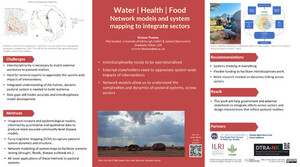
Improving water productivity in crop-livestock systems of drought-prone regions: Editorial comment
Abstract
Crop-livestock systems in sub-Saharan Africa (SSA) are mostly rainfall-dependent and based on fragmented marginal lands that are vulnerable to soil erosion, drought and variable weather conditions. The threat of water scarcity in these systems is real, due to expanding demand for food and feed, climate variability and inappropriate land use (Amede et al., 2009). According to recent estimates, farming, industrial and urban needs in developing countries will increase water demand by 40% by 2030 (FAO, 2009). Water shortage is expected to be severe in areas where the amount of rainfall will decrease due to climate change. The lack of capacity of communities living in drought-prone regions to respond to market opportunities, climatic variability and associated water scarcity also results from very low water storage facilities, poverty and limited institutional capacities to efficiently manage the available water resources at local, national and basin scales. The spiral of watershed degradation causes decline in water budgets (Awlachew and Ayana, 2011), decreases soil fertility and reduces farm incomes in SSA (Amede and Taboge, 2007) and reduces crop and livestock water productivity (Descheemaeker et al., 2011). In areas where irrigated agriculture is feasible, there is an increasing demand for water and competition among different users and uses.
Citation
Amede, T., Tarawali, S. and Peden, D. 2011. Improving water productivity in crop-livestock systems of drought-prone regions: Editorial comment. Experimental Agriculture 47(S1):1-5.










